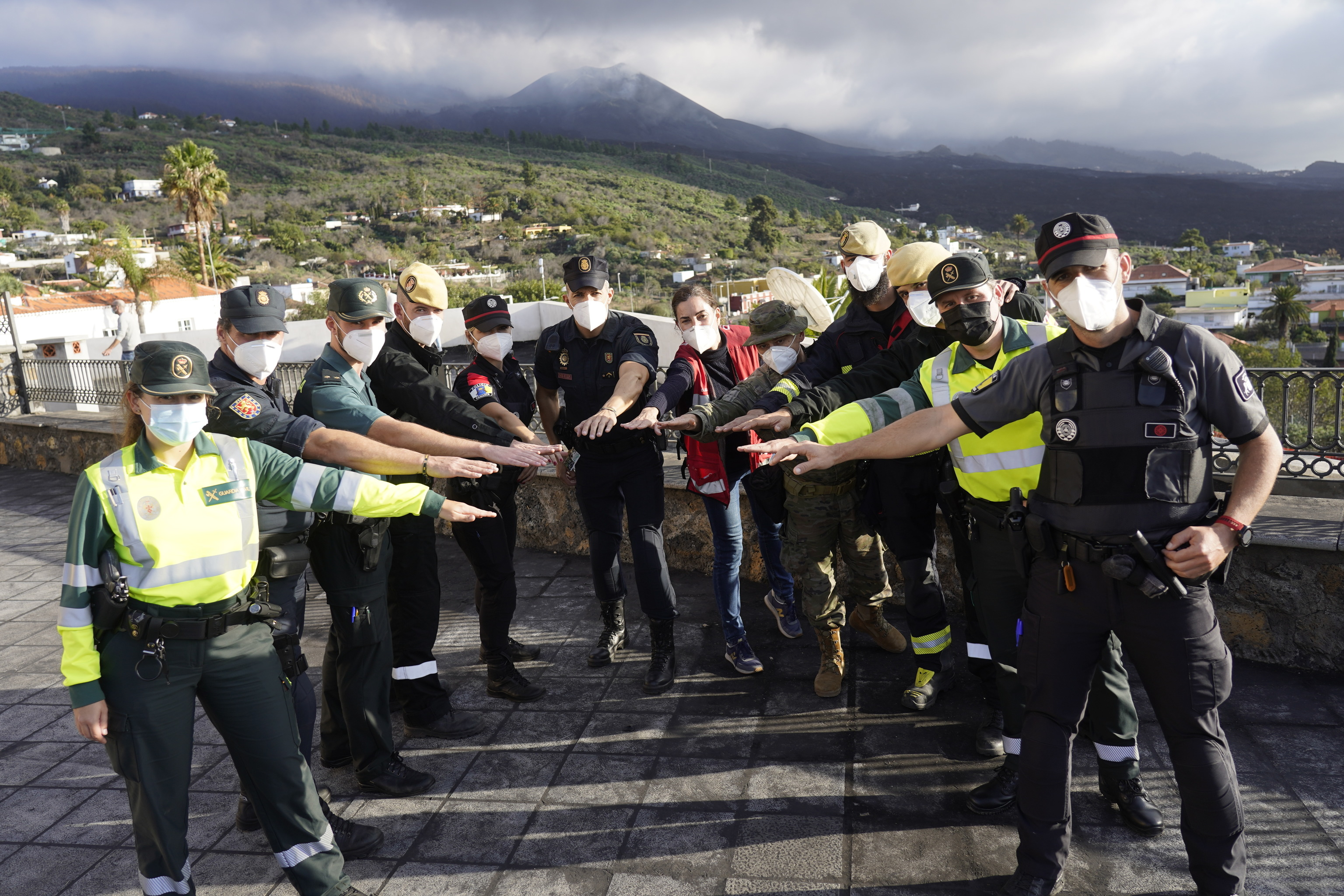On La Palma the eruption is over
Christmas Eve in the caravans of the volcano: "We will not dance or party. We are not for that"
The La Palma eruption is officially over.
Cautiously, but it's over.
It is time to focus on rebuilding the towns besieged by lava for almost three months, but also to take stock of what has been learned from the volcano and how it has responded to this crisis.
Raúl Pérez López, coordinator of the Geological Response to Emergencies Unit of the Geological and Mining Institute (IGME), arrived in La Palma as soon as the precursor earthquakes began, a week before the eruption began: "That was the pre-eruptive process that It put on alert, and I think
we were quite right both in the place where the eruption was going to begin and the date
, because we gave the warning on September 15, "he analyzes from Madrid.
However, he admits that they did not imagine what was to come. "Once it erupted, on September 19, what at first we honestly thought is that we were going to have an eruptive process of a medium and even small nature, with a formation of lavas that did not even reach half of what it has covered. Yes we were clear that it was going to be of the basaltic type, monogenetic, which meant that the explosivity index would hardly exceed level 2, with eruptive columns with an average height of 3.5 kilometers ", says this geologist. who is scheduled to return to the island on January 9.
From his point of view,
"the whole process has followed a script that we knew well;
there are 73 monogenetic volcanoes like this one studied by the IGME in its database, and
we knew how it was going to happen, but some things have happened differently" .
Learned lessons
And it is that this eruption has taught them a lot about the dynamics of Canarian volcanoes, such as the variable behavior of lava emissions depending on the day and the progressive construction and destruction of volcanic buildings. Among the things that have surprised them the most, stands out "the
high number of Strombolian emission centers,
with gas darts and the emissions of bombs [fragments of lava that solidify and are thrown by the volcano]; some have exceeded 1 , 5 km of distance for a weight greater than 100 kilos of bomb ".
"We cannot forget that when a volcano comes into operation, the only thing we can do is observe and collect data," adds Pérez, who stresses that what happened on La Palma shows that
"Spain was prepared for an urban eruption."
Now it is the turn of the politicians: "What they have to do is solve all these problems that the volcano has generated," says Pérez, who considers that this emergency "has been an unmitigated success" of Spanish science.
"The balance we make is that
science has served as the engine of the emergency.
The executing arm, which has been the Civil Protection Directorate of the Government of the Canary Islands, has managed to manage very well that engine that the different scientific organizations have given it, working together with the Military Emergency Unit (UME), the National Police and the Civil Guard, "he says.
Members of the UME, the Army, Traffic and the Red Cross pose with the extinguished volcano in the background
Also noteworthy is the collaboration with the Ministry of Science and the Ministry of Defense.
"We have had funding and flexibility and they have trusted our criteria," he
says.
The health of emergency teams
They have been many days exposed to the materials emanating from the volcano, although he assures that they are well for the moment.
"From day one we have had access to hot lava with toxic gas emissions without us having had any health problems. We have had three medical tests done to study our exposure to thermal radiation, to possible materials with natural radiation. and the presence of toxic gases and heavy metals.
I recently received my third test and they told me that I am healthy as a bull
. "
What is the risk that the volcano will reactivate?
"Once a monogenetic volcano dies, it is not reborn.
If it occurs again, rather than reactivation, it would be a new eruptive phenomenon associated with not dissipating all the energy
in the thermal and pressure imbalance that has occurred at 20 kilometers deep. When a period of time has elapsed it is difficult for it to occur, but it does not mean that it cannot occur, "he says.
According to the criteria of The Trust Project
Know more
Science and Health
La Palma volcano
The Palm
science
Eruption on La PalmaThe future of a 'Galician' volcano: "It neither ends nor is it going up"
ScienceA second cone grows "at high speed" on La Palma
La Palma volcanoThe eruption in Cumbre Vieja had been preparing for four years
See links of interest
Last News
What
2022 business calendar
Check Christmas Lottery
Covid passport
2021 Christmas Lottery Prizes
Loteria del Niño 2022
Second Prize Lottery 2021
El Gordo de la Loteria

